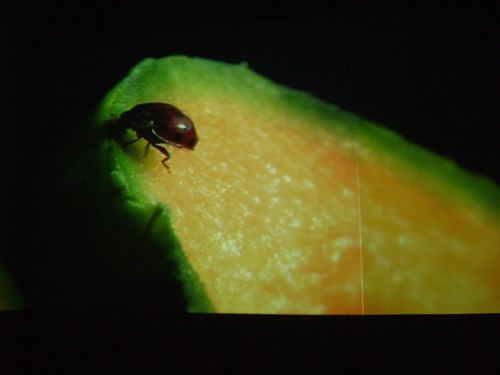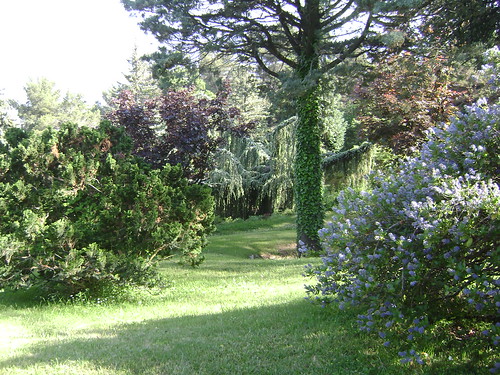Jasmine & Cantaloupe
(AKA Prosciutto e Melone - a simple carpaccio dish that seemed rather alluring even to my eternal vegetarian-born-and-raised palate. Thin slices of cured ham were layered flat on a plate, and wedges of cantaloupe arranged on top. It seemed so odd to me to pair something so meaty and brown with something so vividly orange and juicy. But, living vicariously through the carnivore boyfriend I had at the time, I gathered that the magic lay in the contrast between the saltiness of the prosciutto and the fragrant sweetness of cantaloupe - not unlike the Balkan signature pairing of crispy sweet watermelon with creamy and heavily brined feta cheese.
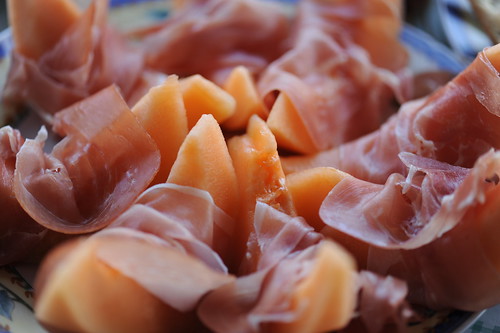
While in Grasse, I had the pleasure and honour to meet with Michel Roudnistka - a multi sensory and visual artist (photographer, perfumer and filmmaker who combined his videos into a film that is accompanied by five difference ambient fragrances, each for a different indigenous culture around the world), and that is when I firs experienced his magnificent perfume Emotionelle, which he created for Parfums DelRae in San Francisco. How does Emotionelle smell?
Picture this in ripe, juicy, room-temperatured cantaloupe in your mouth, with a full-bodied flavour filling your entire palate:

Suddenlly and immediately, you are interrupted by more than a whiff of this indolic jasmine:
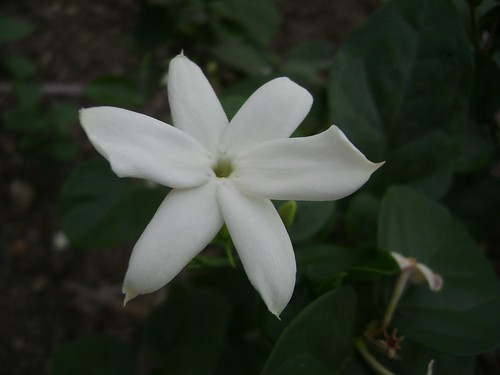
That is the basis for Emotiomelle, the main structure upon a complete, original and unusual perfume is built. One could argue the source for this pairing is in Le Parfum de Thérèse (which the perfumer's father created for his mother), or Diorella. However, the other two had melon, not cantaloupe. And that is a huge difference. As far as influence goes, I would suspect that a new cantaloupe molecule or base was invented that year in one of the Grasse houses, because both Emotionelle and Un Jardin Après la Mousson (which pairs this very cantaloupe note with more bracing, chilled spice notes and cooling vetiver) were released the year prior (2008).
Emotionelle opens with a big, ripe, juicy cantaloupe note and is paired with sultry jasmine and sweet violets. It’s hard to believe these will get along, but they sure do. The key is in the balancing of the animalic indole in the jasmine with softly-blended, oily violet, musk and cedar notes, almost like pastel crayons smeared with a persistent finger to create a bold picture with loud colours yet with very soft texture.
The result is magical, even if a little disturbing, like striking the right chord in the right time. After all, we are talking about pairing something very edible, with something very floral and animalic. To me Emotionelle is very sexy, sensual. I like the fact that it's a distinctive tricolour - with cantaloupe, jasmine and violet being in the centre at all times. There is a complexity and tension that all three bring to the composition, but there are also other subtle layers underneath that keep it from being too simplistic and ordinary. Those who yell "cantaloupe" and dismiss it (most of the reviews I read, actually) miss the entire point. There are many composition styles, and Michel Roudnitska's is one that takes a theme and goes all the way with it. It's also what I smell in Noir Epices: it's very bold combination of geranium, cloves, orange and cinnamon. But it's brining a new, modern meaning to the ages-old pomander scent (the root of all Oriental-Spicy scents, if you ask me) - by not trying to play it quieter, but rather amplifying the seeming dissonance between those notes. Those who pay attention will find it actually humorous, playful and at the same time sophisticated. In the case of Emotionelle this is achieved with low dosage of musk to offset the animalic indole; cedar wood to substantiate the ionones; and warm, sweet notes of honey, amber and labdanum to deepen the sweetness of the cantaloup, with tiny sparkling of spices (cloves, cinnamon) for a bit of warmth and dimension.
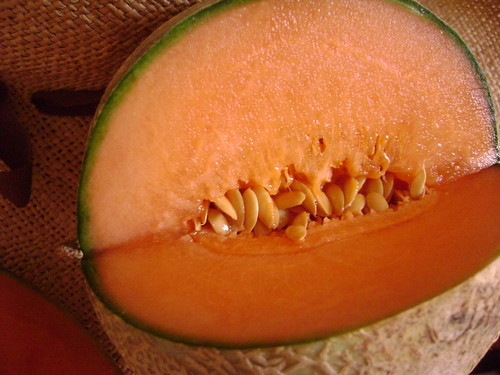
To me this perfume will forever remind of Southern France and in particular Grasse, and the visit to Michel's studio and home in Cabris where I first smelled Emotionelle. There was an osmo-art (multi sensory film) projected in one of the room of the MIP (Musée International de la Parfumerie, AKA International Perfume Museum) of which an image of a ladybug crawling along a split cantaloupe was the olfactory if not visual highlight. And lastly, the cantaloupe in the above photo is one I bought and ate there, in its entirety, one afternoon. I didn't have a big enough refrigerator in my hotel room there, so I had to eat most of it room-temperature (which is actually delicious, by the way: it makes the fragrance more apparent than when chilled). It is the perfume of a hot spring day up on the mountainous Alpes-Maritimes-Cote d'Azur, where the sun shines generously, people are warm and hospitable, life is slowly savoured with the people you love, lunch breaks span over two hours minimum, and an afternoon siesta to follow is not a bad idea at all, especially when the room is permeated with a fragrant cantaloupe.

Top notes: Cantalupe, Tangerine, Bergamot, Ylang Ylang, Prune
Heart notes: Jasmine, Violet Flower, Violet Leaf, Rose, Cinnamon, Honey
Base notes: Vanilla, Cedarwood, Cloves, Patchouli, Musk, Amber, Labdanum


